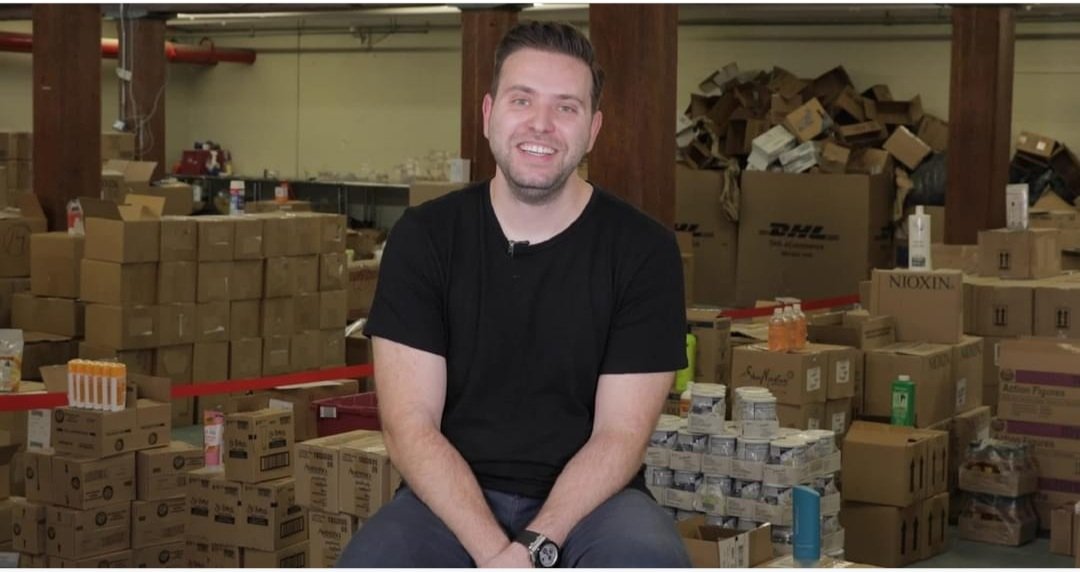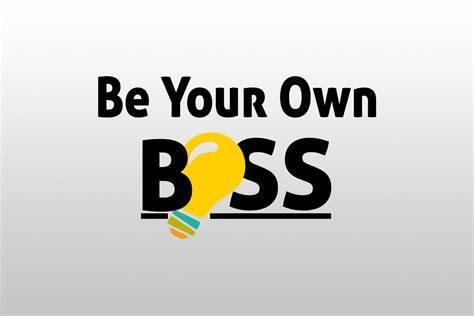Nerf guns saved Larry Lubarsky’s life.
Well, not just Nerf guns. But also lozenges, shampoo and cookies and the thousands of items he sells on Amazon as a third-party seller.null
Seven years ago, Larry Lubarsky was a 31-year-old high school dropout who had no money saved and was $100,000 in debt. Today, he’s 38 and running a company that has 10 employees and brought in $18 million last year selling thousands of different products on Amazon.
“I was living with my mom, I was severely in debt, I couldn’t afford my phone, my car. I couldn’t afford to, you know, take a girl out on a date, anything like that,” Lubarsky tells CNBC Make It. “So, it saved my life financially.”
Lubarsky buys products — like electronics, beauty supplies or toys — in bulk and then re-sells them on Amazon for a profit. For example, if Lubarsky sees Nerf gun selling for $20 a piece on Amazon, he will buy hundreds or thousands of the toy for $10 per unit wholesale, then sell them on Amazon and for a profit $5 per toy (after Amazon’s fee’s are taken out), he says. Of course, that’s assuming it’s a desirable product that people will buy.
“Basically, we’re looking for that one percent of products from the thousands that you look at that actually sell well and have a nice profit,” Lubarsky tells CNBC Make It.
At any given time, Lubarsky’s business will have nearly 3,000 total products listed on the Amazon Marketplace and he sells, on average, anywhere from 1,500 to 2,000 orders per day between the US and Europe
Last year, the business brought in $18 million in revenue, including a net profit of $4 million, and Lubarsky says he’s looking to reach $20 million in revenue in 2018.
‘I was dead broke’
In 2011, Lubarsky “hit rock bottom,” he says. “I was dead broke, I kind of felt that my life really wasn’t going anywhere, and I was in a really bad place.”
Born and raised in Brooklyn, Lubarsky dropped out of high school to become a stockbroker at 17 and had spent over a decade selling stocks, but the financial crisis of 2008 and its aftermath took a toll and left him over $100,000 in debt.
Without a dollar to his name, Lubarsky moved in with his mother and started looking for any work he could find at pizzerias and other local businesses, any 9-to-5 job where he could earn “500 bucks a week to just pay my regular bills and start paying off some of the debt,” he says.
In 2012, a friend who owned an optical store in Brooklyn hired Lubarsky to answer the phone for about $500 per week. As it turned out, that same friend had a side-business buying sunglasses and eyeglasses wholesale and then selling them on Amazon as one of the site’s roughly 300,000 third-party sellers in the US.
“I had no idea that selling on Amazon was even a thing,” Lubarsky says of his first brush with the business. “I didn’t even know that even existed.”
But “When I picked up a product and saw that, ‘Hey, I can buy this for $10 and I can sell it on Amazon for $20 and make 10 bucks in the process, and it’s selling five [or] six times a day,’ — that’s when the light bulb went off for me. And, that’s when I realized, you know, that I can scale this business out.”
Lubarsky helped his friend expand his business to Amazon UK and run it in exchange for a “small cut” of the profits. Within a year, Lubarsky’s piece of the business was bringing in “a couple of million dollars annually,” he says.
Starting his own business
The windfall from his cut of that Amazon business got Lubarsky back on his feet. He rented his own apartment in Brooklyn and in 2014, used his newly acquired expertise to launch his own Amazon business.
“I knew everything that needed to be done in order to get the business off the ground,” Lubarsky tells CNBC Make It.
The only thing he needed was seed money. So, Lubarsky pitched his idea to a few friends before one (who Lubarsky declines to name for privacy reasons) believed in the idea enough to invest $60,000. Lubarsky spent $10,000 on shipping supplies and the rent for a small, one-bedroom house in Brooklyn where Lubarsky started working out of the garage.
The rest of the money went toward Lubarsky’s first batch of inventory, nearly 100 different wholesale products (mostly health and personal care) that he knew would sell well based on his previous experience selling on Amazon.
“We bought $50,000 worth of products,” Lubarsky says. “They started selling. Let’s say, you know, 60 to 90 days went by — that $50,000 came back to us as [$70,000].”
Lubarsky then took that entire $70,000 and reinvested it into more inventory. Soon, that turned into roughly $100,000, he says, adding: “We took that and we reinvested it back.”
“When we started the business, we didn’t pay ourselves. We didn’t take a dollar for … maybe even upwards of a year and a half,” Lubarsky says. “We just kept selling stuff, taking the money, reinvesting it into new products.”
At the time, Lubarsky tried to minimize any costs in order to keep reinvesting as much money as possible.
In addition to working out of a small, Brooklyn garage, Lubarsky and his partner also performed most of the necessary shipping and packing tasks himself, working around the clock, both during the week and on weekends, in order to make the business work.
“When I started, I was labeling everything myself, I was doing the research myself, I was placing orders with the vendors myself,” Lubarsky says. “Stuff would get shipped to our house, we would open everything, label everything, pack everything, prep everything ourselves, ship everything ourselves, build pallets ourselves.”
Once the business had established a steady cash flow, though, they finally hired some help, bringing on one additional worker at a time over the next few years. Now, over four years later, the business employs a team of 10 people (including five part-time workers) who work out of a 4,400-square-foot commercial warehouse in the Red Hook neighborhood of Brooklyn.
The business kept expanding, as Lubarsky continued plowing the proceeds of past sales into buying more inventory, and it’s continued to grow well past the point of bringing in eight figures annually. Lubarsky’s business brought in between $3 million and $4 million in revenue in its first year, he says, and that number had already reached $10 million by 2015.
By 2016, Lubarsky and his partner had saved enough money that they were able to invest another chunk of change — about $130,000, Lubarsky says — into the business in order to increase the inventory.
Looking ahead, Lubarsky expects to stick to the same business model and watch his business continue to grow year after year, with $20 million in revenue in his sights for 2018.
How to pick a winning product
Generally speaking, the most popular items that Lubarsky sells typically fall into five categories: electronics, beauty products, groceries, toys, and health products, he says.
But, because the popularity of various products may rise or fall depending on factors ranging from consumer trends to seasonal demand, Lubarsky’s inventory tends to run all over the map. For instance, when CNBC Make It spoke with Lubarsky, his warehouse had boxes filled with everything from vitamins and lotions to cookies and tea bags, not to mention Nerf toys, Funko toy figurines, and nausea-relief lozenges for pregnant women.
But Lubarsky is really only interested in his ability to move the items and make a decent profit. So when deciding what to buy, the first thing he checks on Amazon’s Fulfillment by Amazon (FBA) site is an item’s rank among best-selling products to get an idea of its “sales velocity,” which is how many units of each product are sold per day, on average. (He likens the process of closely watching the sale prices of certain products to decide which ones to buy more of and which ones to stop purchasing to that of his old gig as an investment portfolio manager.)
“If I’m spending money I want to know that, no matter what, I can sell that product and get my money back,” Lubarsky says. For the most part, Lubarsky is unlikely to consider any product that is outside of the 50,000 top sellers on Amazon’s ranking, because anything ranked worse than that is more likely to leave him with unsold inventory, he says.
The second factor he considers is the expected return on his investment (or, ROI). “I am looking for an ROI of at least 30 percent,” he says. “If I’m spending $10 on a product, I want to get back at least a $3 profit.”
What’s more, Lubarsky’s third rule is that he doesn’t want to buy a product unless he’s getting at least a minimum of $3 profit per item, because otherwise the margin is too small to be worth the time and effort. “I won’t take a 30 percent ROI on a $2 product,” he says, because the profit would only be 60 cents.
“If those three things check out, I make a small test order, I buy some of the product, I send it to Amazon,” Lubarsky tells CNBC Make It. “If it sells well — no problems, no issues — I see how many I’m selling, then when it’s time to reorder that item, I’ll buy a little more and just rinse and repeat that process and then scale it out.”
Lubarsky repeats that same process every day and he now also employs a team of virtual assistants — about five people who work remotely on a variety of tasks, such as researching brands and products that might make good investments for Lubarsky, as well as contacting suppliers and handling customer service tasks like responding to emails and messages from Amazon customers.
Living the dream
Raking in nearly $20 million in annual revenue is obviously a far cry from where Lubarsky was just seven years ago, when he was deeply in debt and living at home with his mother. Now, Lubarsky and his wife, Frances, live together with their young daughter in a Brooklyn apartment and are hoping to move into a house in 2019.
Lubarsky fully credits his business for turning his life around, but just because Lubarsky’s life turned around, he doesn’t want to give the impression that making millions on Amazon is easy.
Selling on Amazon isn’t a “a get-rich-quick scheme or something that’s passive income where you do it one or two hours a day, or a week, from your laptop on the beach somewhere,” Lubarsky says. “Selling on Amazon is [an] amazing, incredible business, but much like any business, it’s a real business [that] requires work, it requires effort.
“I often compare my Amazon business to someone opening up a brick-and-mortar business, or a restaurant or any kind of real physical business. It requires work, investment, time, patience — there’s a million different things that can go wrong, but for the person who’s willing to put in the work, I think this is an incredible business.”





